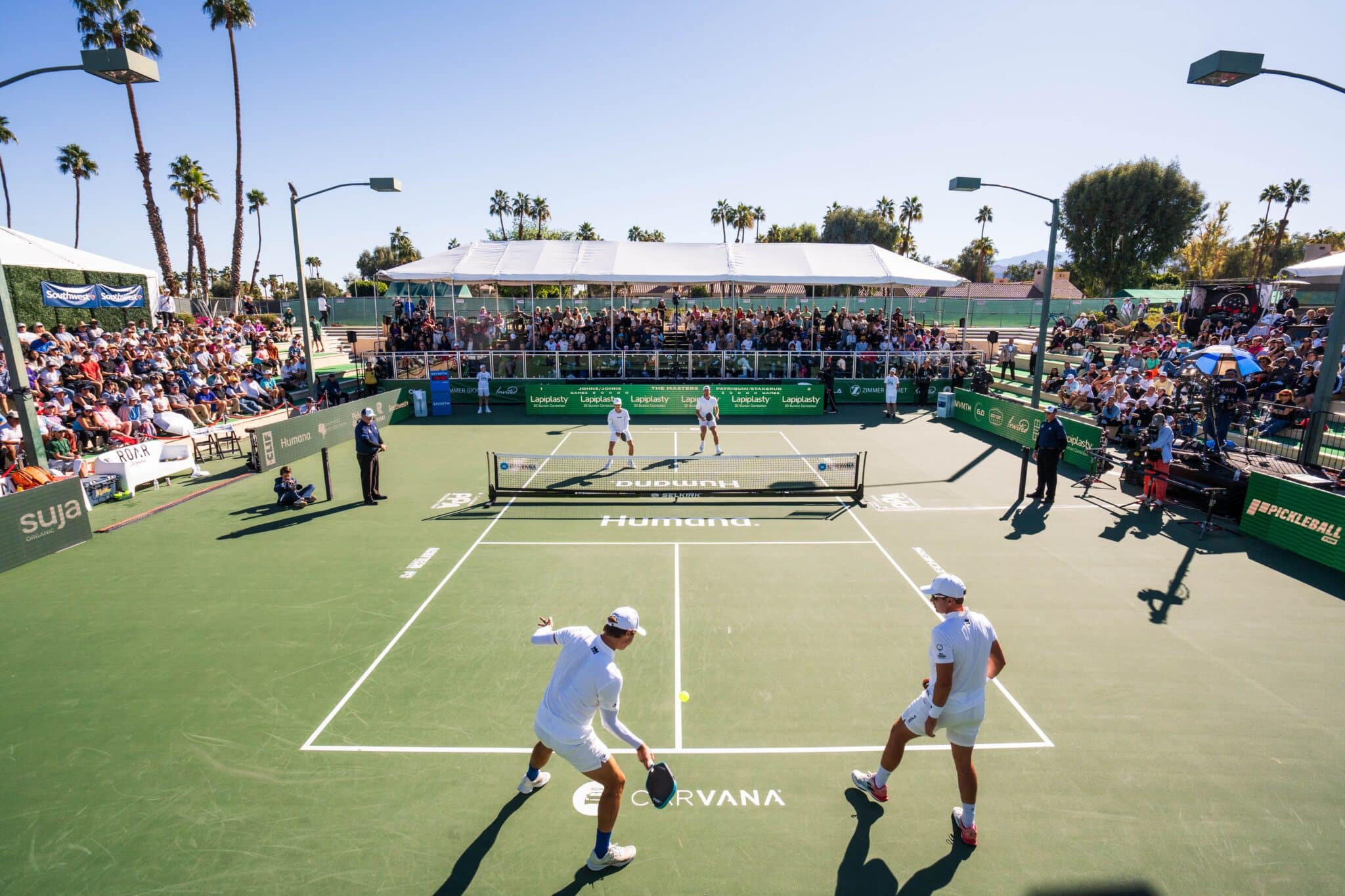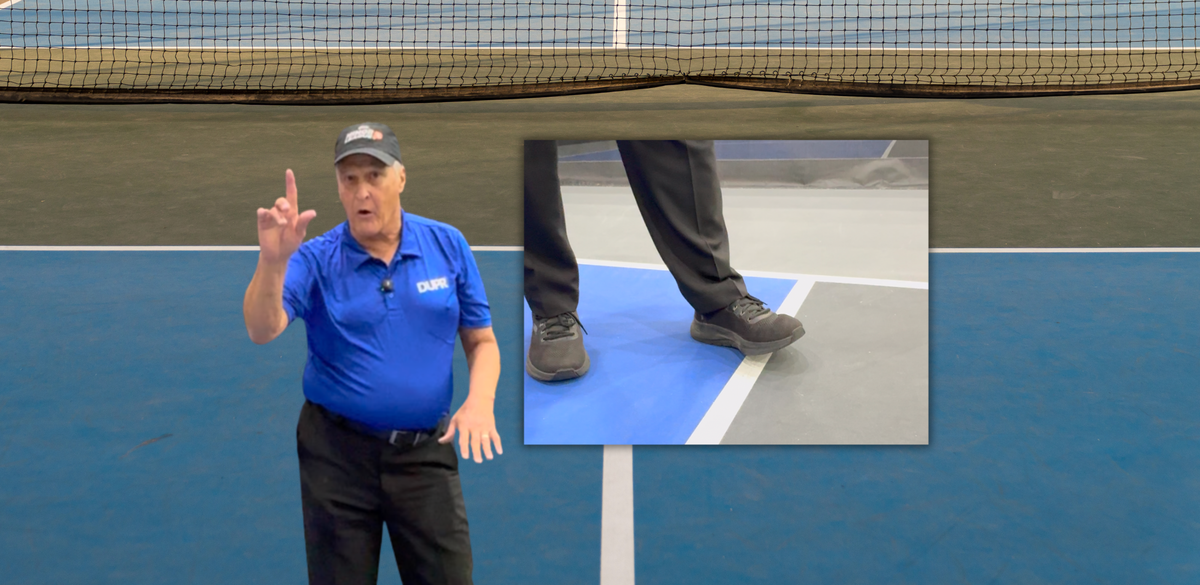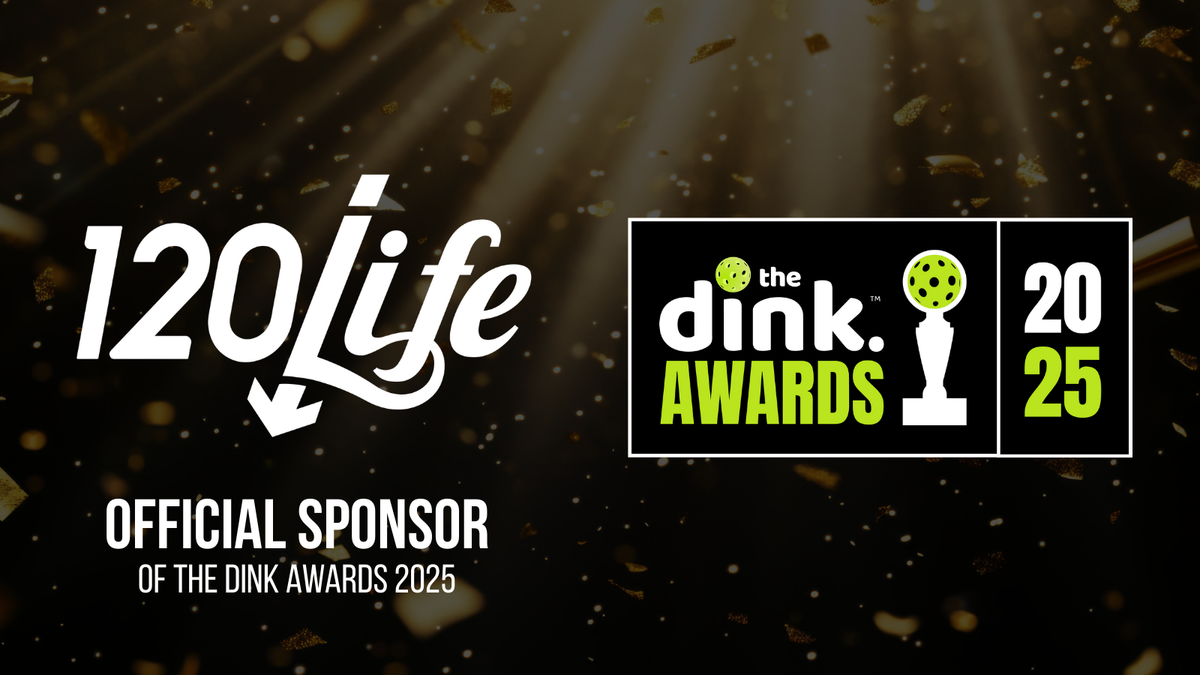Pickleball is one of the most fun and engaging sports you can play. It’s easy to play, inexpensive and borderline addicting. But as with any topic that’s rising in popularity, there are myths and misconceptions that form around it. Pickleball myths have indeed developed in the sport, and some of them can be quite damaging.
That’s why I’ve collected a handful of pickleball myths to debunk. I’m going to give you a list of some that I’ve come across, then gently apply a myth-busting sledgehammer to them. Before we begin, let’s talk about where these myths come.
Where do pickleball myths come from?
There’s something unique about pickleball that most other sports don’t enjoy. It’s exploding in popularity and spreading like wildfire. Golf went through a phase like this, but it wasn’t nearly as explosive as pickleball’s development.
Here’s the problem though, pickleball used to be a game that only seniors played. Just 15 years ago, hardly any young people were playing the sport. However, as time went on, so did the development and reach of the game. Fast forward to today, and you see the younger crowd playing much more pickleball than before. And when you have a drastically different demographic coming into something like pickleball, the game will change. But unfortunately, not society’s conceptions of it.
This is how some of these myths developed. What used to be true 15 years ago, may no longer be accurate. That’s why some of these myths that I talk about below will be relative or “somewhat true.” Keep that in mind as you read. But enough chatting, let’s bust some myths!
Pickleball is a senior’s sport only
This pickleball myth is exactly what I was just explaining in the previous section. This used to be somewhat true, but it no longer is. It’s understandable.
But it’s still a myth, and it still needs busting! Pickleball is not a senior-only game, nor is it a game that’s specifically tailored to that demographic. Pickleball is a sport for every one of almost all ages. As I’ve said before, anyone from eight to eighty can play. It’s great for kids, teenagers, 30-year-old career people, middle-aged people, and seniors. Because of its tremendous flexibility, pickleball is played at many levels of skill.
I come across this pickleball myth a lot because I’m always talking to people about the game. Most people have at least heard of the sport, but most still don’t understand that it’s not a senior-only game.
The best way to combat this myth in casual conversation is to explain how rapidly pickleball has developed over the years. Explain that indeed, it was a great exercise option for seniors to do at retirement centers to keep their bodies moving, but that it’s changed since then. Show them a competitive, young person’s game, and they will quickly learn that it’s not just for the old folks.
Pickleball is a dinking game only
I honestly don’t understand where this myth came from, but I hear it all the time especially when I was first learning how to play. When I first started, I didn’t know very many young people who play (I’m 31 at the time of this writing.) I was consistently told not to drive the ball over the net or hit it too hard.
What a load of bologna!
But again, this can be relative based on where your skill level is and who you’re playing against.
For example, in 5.0 (the highest level) professional men’s matches, you hardly see them drive the ball. The reason is that men at this level can drive the ball quickly and powerfully. They obviously don’t want this, so they dink the ball and keep it as low and slow as much as possible.
Don’t let myths like this stop you from playing the game how you want to play it. Pickleball is extremely diverse. If you’re getting advice from someone, it’s important to understand what context it’s in. If you’re a 25-year-old and a 70-year-old is trying to tell you that pickleball is all about dinking, well, that may be true for him, but it’s probably not true for your age group at all.
Context is king.
Don’t worry about how other people play the game or what is considered “normal play.” Throw caution to the wind and play how you want.
It doesn’t matter what paddle you use
Oh boy, this is a fun one for me. You don’t hear this pickleball myth very often, but it can have serious consequences.
As you may know, I’m a complete paddle nerd. I love trying out new paddles and diving deep into the mechanical details. The release of a new paddle for me was like Christmas morning when I was seven. I know quite a bit about them.
The truth about pickleball paddles is that most paddles are going to behave similarly, but some can be very different depending on what they’re made of.
One great example is how a lot of beginners will start out on the Onix Z5. There’s nothing wrong with this paddle per say, but it performs differently than most paddles on the market. The Onix Z5 has a nomex core and a graphite face meaning that every strike with the paddle will feel hard, tactile and powerful. Unfortunately, this also means that finesse and soft shots that are required for advanced play can be harder to achieve. If a beginner player never upgrades from this paddle, then they may never gain the control they need for advanced play.
Look, we all that skill and technique always come before what kind of paddle you buy. But buying the right kind of paddle will make a difference. Want more spin on the ball? Choose a fiberglass face. Want that great “pop” feeling off the face but still want ball control? Choose a polymer core with a graphite face.
The real difference between paddles that you need to watch out for is weight and weight balance. Using the wrong kind of paddle can also cause injuries if you’re not careful. If you have weak arm or wrist strength, using a paddle that’s too heavy for you can lead to common arm injuries that you see in racket sports. Wrist pain, fatigue or even tennis elbow could soon be in your future. Figuring out where your weight range for paddles is and buying the right kind of paddle for you is crucial for your success on the court.
If you want to see my current paddle recommendations, head on over here to see them.
The third shot drive is always a bad idea
This myth is utterly false and is actively keeping people from playing to their best ability.
In case you’re unfamiliar, there are typically two things you can do on the third shot of the game. You have the third shot drop or the third shot drive. The third shot drop is a soft shot that lands in the kitchen to prevent your opponent from slamming the ball back at you. Whereas the third shot drive is a powerful shot that’s meant to catch your opponents off guard but can be risky if it’s not done correctly.
The reason why third shot drives are risky is that your opponent can easily block the shot into the kitchen. That’s a near-guaranteed loss of the point for your team. Considering this, a lot of people hate third shot drives and don’t like it when their partners try to use them.
But the problem that people run into is that they use the third shot drive as a regular shot, and not as a tool. You have to think of the third shot drive like a tool, and not a “bread and butter” shot.
Imagine, if you will, a typical return serve in pickleball. Wherever that ball is heading will dictate whether you can pull your third shot drive out of its tool belt. For example, if the ball heads into deep court and low then there’s no way you can drive that. That is how people make mistakes using the third shot drive. Driving a deep return serve is very risky, and it’s hard to generate the power and angle you need.
However, what if yours or your partner’s serve was hard and fast? That means that the return serve back to you may be weaker and higher than usual. If the ball bounces up high enough, then you can pull out your third shot drive and let it rip. But notice how it’s an opportunity and not a routine shot. That’s the key to doing a third shot drive properly.
Pickleball is easy on your body
This is partly true. The reason why I have this listed here is that it’s a common selling point to get people into the game. There’s nothing wrong with that, but there is a gigantic asterisk that’s not being talked about. And that is, of course, pickleball injuries. Here are some injuries that you can suffer from if you’re not careful:
- Shin splints/stress fractures
- Tennis elbow
- Plantar fasciitis
- Jumper’s knee
- Strains sprains and more
Look familiar? Yes, these are the same types of injuries that you can get in tennis.
The reason why this myth got popular is that pickleball used to be a senior-only sport. And yes, for seniors, it’s not that hard on your body. But for young people, it can be brutal. The more athletic, active and vigorous you are on the court, the worse it will be. Pickleball is no joke!
I am personally dealing with shin splints at the moment, and it’s not fun.
You have to wear tennis shoes
This is something that you hear all the time. This is more of an overgeneralization than a myth because it depends on what kind of court material you’re playing on. Before we get into it, I cannot tell you what shoe you should wear. That’s up to you. But I do want to bust this misconception because, for some people, tennis shoes are a terrible idea.
In general, there are two types of shoes that you can wear for pickleball:
- Tennis shoes
- Court shoes
Did you know that there was another option in terms of footwear? Yes, you can wear court shoes!
Side note: I’ve seen people wear running shoes but in general, it’s a bad idea. I would avoid them.
When you were growing up, did you ever wear tennis shoes? They were probably super cool looking, and some of them even had lights in them that would flash! Do you remember going back to the store as you got older to get new pairs as your feet grew?
Guess what; those weren’t tennis shoes. Not even close.
The shoes that we called “tennis shoes” when we were young were running shoes.
Most real tennis shoes are bulky, sturdy and heavy. You won’t know what a real tennis shoe is until you feel one. Even as adults, the vast majority of the shoes that we see at the shoe store are just running shoes, not tennis shoes.
Here are some common characteristics of tennis shoes:
- Tennis shoes can weigh up to 13-15oz whereas running shoes typically weigh around 9-11oz.
- Tennis shoes are thick, bulky and stiff.
- Tennis shoes typically bend toward the toe whereas other shoes bend towards the middle.
- The sole of a tennis shoe is almost flat.
In general, tennis shoes will give you better traction on a tennis court, but a court shoe will be better on gymnasium floors. I primarily play indoors in a gym, so I wear running shoes. But that’s just me.
Court shoes can work just fine as long as you’re playing on gymnasium floors. But they have to be sturdy. The kind of shoe that weighs less than your paddle and hardly covers your feet are unusable in pickleball. They need to fully cover your feet and support you on all sides.
As I said, I’ve seen plenty of people play pickleball with court shoes, and I’ve never seen anyone roll their ankle.
However, where you want to avoid court shoes is if you’re playing on actual tennis court material. The material that’s used for tennis courts has an enormous amount of traction to it. Your court shoe will grab onto it and won’t let go. Using a tennis shoe for what it was designed for, tennis court would be much better in this case.
Young people always have advantages over seniors
This is another one that I’ve put towards the bottom because it’s not entirely true. Yes, young people have an advantage if they go up against a senior 1 vs. 1. Here’s the genius behind pickleball: anyone can play, and anyone can be good at it.
In fact, young and fit pickleball players can get stomped by an experienced senior player. That’s the great thing about pickleball; power and brawn don’t always win. As a 31-year-old, I’m a strong, fit and fast guy. But often I will get clobbered by older men. One man, in particular, is in his 70s and he outplays me on a consistent basis.
How you win in pickleball is all about strategy. The more strategic you are with your shots and how you play, the more likely you are to succeed.
When advanced senior plays play against me, they have only one thing on their mind. Do not hit it to them. It’s boring for me, but it works. Taking me out of the game takes all of my power out of the equation, making it more likely for the seniors to win. The older ladies do this against me as well. They know that if they pop one up to me, they lose.
If you’re a senior and you’re worried about this; don’t be! You can win even if you’re playing against young people! Pickleball isn’t a brawn and power sport. It’s a strategic sport.
There is no running in pickleball
Yes, that is true. There is no consistent form of running in pickleball. But there is sprinting.
And a lot of it.
Pickleball is a highly volatile sport. One moment you’re just lightly dinking the ball back and forth, then the next moment you’re frantically hitting volleys back and forth. Then after that, you’re sprinting around the court trying to get balls back. And to top it off you go back to slowly dinking the ball. Some people would say: “pickleball is insane.”
Yeah, I agree with that.
But it depends on your age group. If you’re a senior, then yes, there isn’t much running or sprinting in pickleball. However, if you’re in your 20s and you’re playing with people your age, then you can expect to be sprinting all over the place. These distinctions are very important to make.
If you’re a young person looking to get into pickleball, don’t think that it’s a lazy, easy-going sport. It’s not. You’ll be sprinting all over the place, especially if you’re playing doubles.
Myths busted!
I hope that some of these clarifications have helped you to understand some of the lesser known details about pickleball. Are there any other myths or misconceptions that frustrate you in pickleball? Let me know in the comments below!
Anuncie Aqui / Advertise Here
Sua marca para o mundo Pickleball! / Your brand for the Pickleball world!

 English
English  Spanish
Spanish  Portuguese
Portuguese  German
German  Italian
Italian  Japanese
Japanese  French
French  Polish
Polish  Russian
Russian  Netherlands
Netherlands  Hungarian
Hungarian  Turkish
Turkish  Videos
Videos  Pickleball Kitchen
Pickleball Kitchen








 English (US) ·
English (US) ·  Portuguese (BR) ·
Portuguese (BR) ·